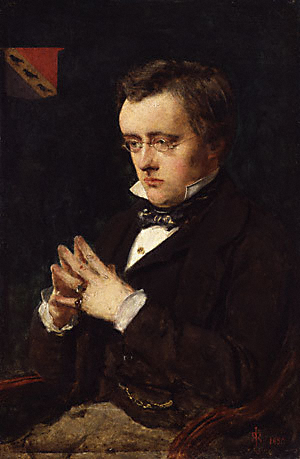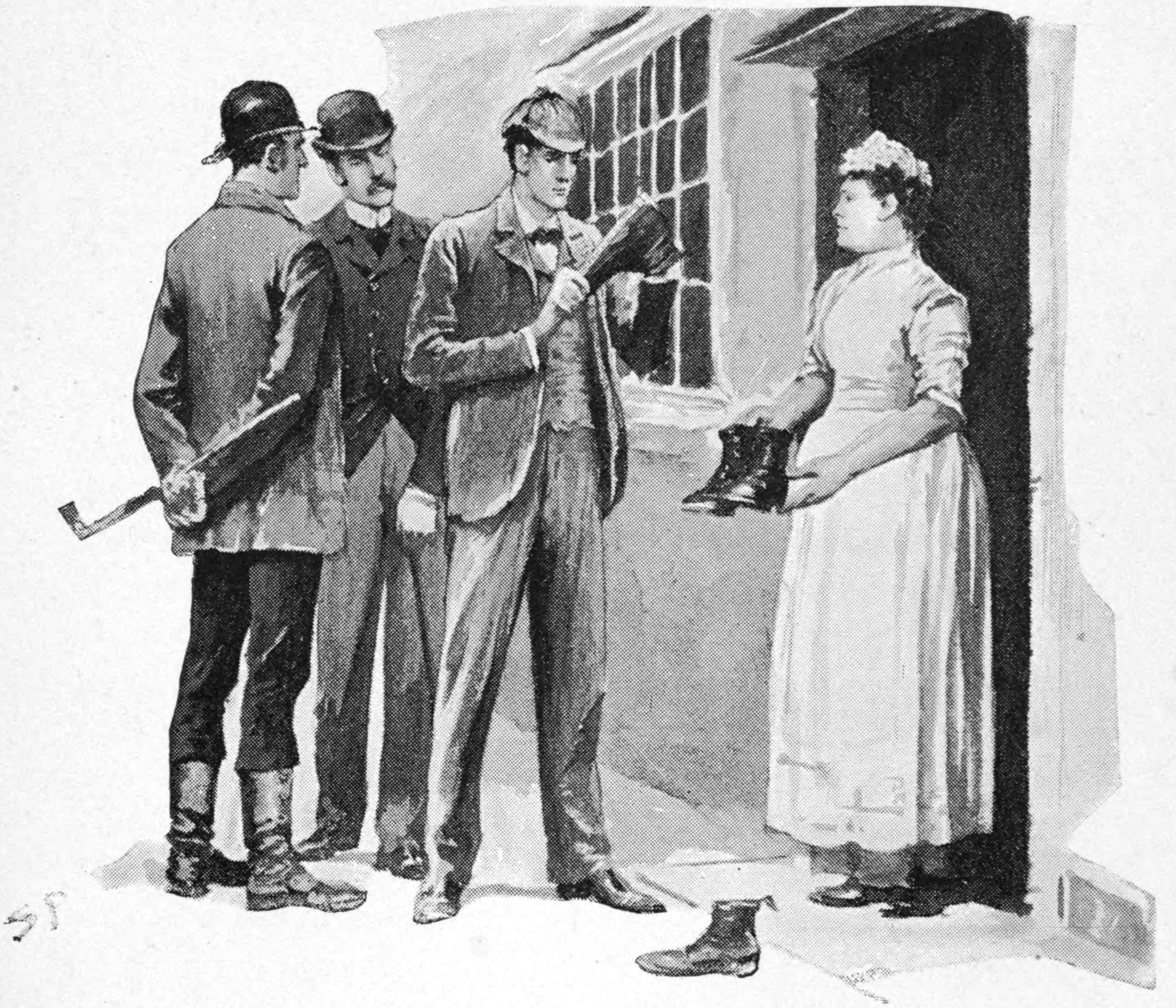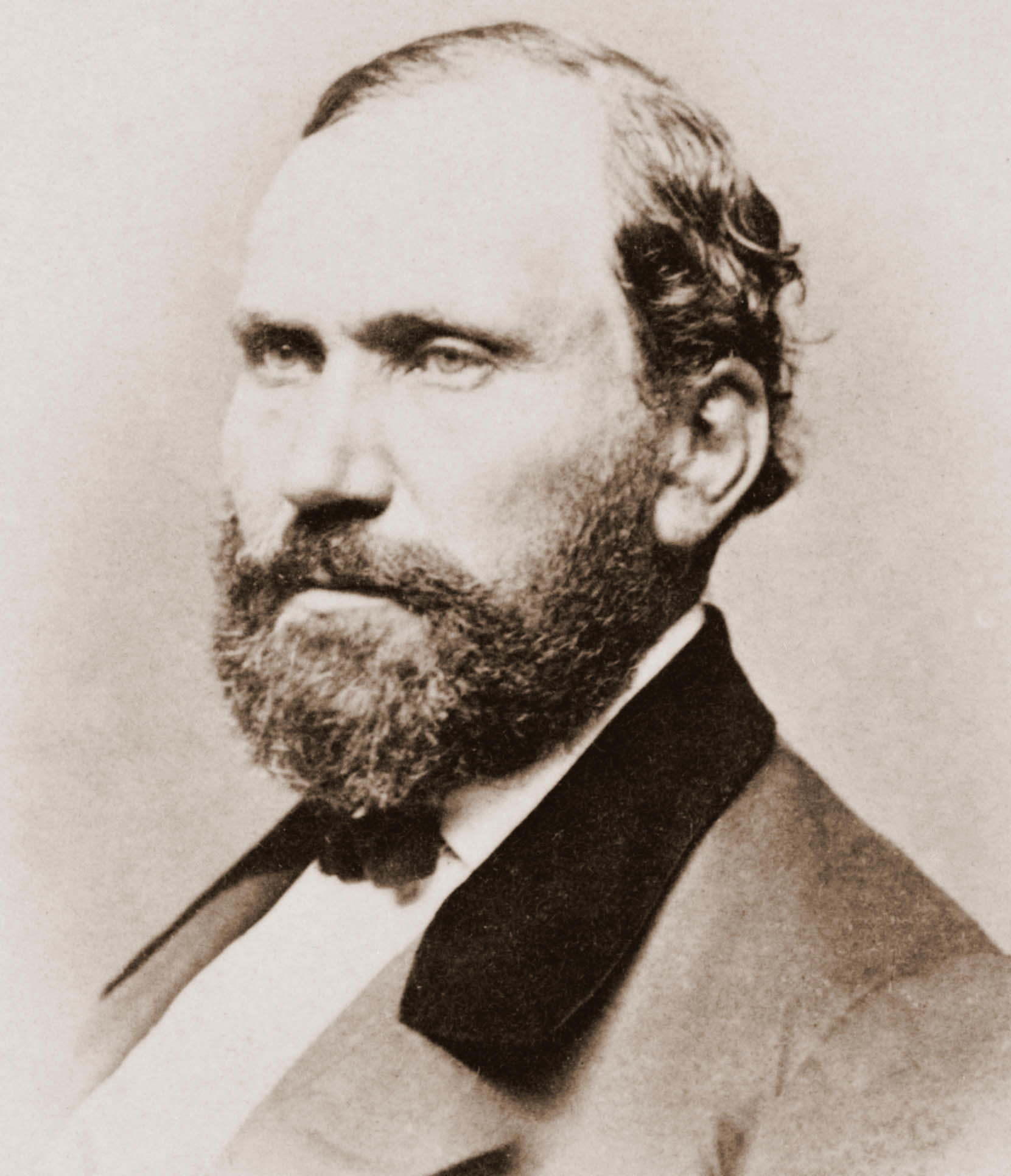|
Who Killed Zebedee
''Who Killed Zebedee?'' is a short detective story by Wilkie Collins, first published under the alternate title "The Policeman & The Cook" in serial form in 1881. A young wife is convinced that, while sleepwalking, she has murdered her own husband, John Zebedee. Together, a young constable and the cook from the couple's final lodgings attempt to uncover the truth. Plot summary "Who Killed Zebedee?" opens with a direct address to the readers by an otherwise unnamed narrator. On his deathbed, our narrator, a Roman Catholic, feels compelled to make a confession to the readers about his involvement in an unsolved murder case back when he was still a young police constable in London. The recounting of the death of Zebedee opens with a distraught young woman, Priscilla Thurlby, the cook at the Zebedee's boarding house, rushing into the police station with a blood-curdling scream. Priscilla informs the skeptical assembly that, "A young woman has murdered her husband in the night!" ... [...More Info...] [...Related Items...] OR: [Wikipedia] [Google] [Baidu] |
Wilkie Collins
William Wilkie Collins (8 January 1824 – 23 September 1889) was an English novelist and playwright known especially for ''The Woman in White (novel), The Woman in White'' (1859), a mystery novel and early "sensation novel", and for ''The Moonstone'' (1868), which has been proposed as the first modern English detective novel. Born to the London painter William Collins (painter), William Collins and his wife, Harriet Geddes, he moved with them to Italy when he was twelve, living there and in France for two years, learning both Italian language, Italian and French language, French. He worked initially as a tea merchant. After ''Antonina'', his first novel, appeared in 1850, Collins met Charles Dickens, who became a friend and mentor. Some of his work appeared in Dickens's journals ''Household Words'' and ''All the Year Round''. They also collaborated on drama and fiction. Collins gained financial stability and an international following by the 1860s, but became addicted to the op ... [...More Info...] [...Related Items...] OR: [Wikipedia] [Google] [Baidu] |
Detective Fiction
Detective fiction is a subgenre of crime fiction and mystery fiction in which an investigator or a detective—whether professional, amateur or retired—investigates a crime, often murder. The detective genre began around the same time as speculative fiction and other genre fiction in the mid-nineteenth century and has remained extremely popular, particularly in novels. Some of the most famous heroes of detective fiction include C. Auguste Dupin, Sherlock Holmes, and Hercule Poirot. Juvenile stories featuring The Hardy Boys, Nancy Drew, and The Boxcar Children have also remained in print for several decades. History Ancient Some scholars, such as R. H. Pfeiffer, have suggested that certain ancient and religious texts bear similarities to what would later be called detective fiction. In the Old Testament story of Susanna and the Elders (the Protestant Bible locates this story within the apocrypha), the account told by two witnesses broke down when Daniel cross-examines th ... [...More Info...] [...Related Items...] OR: [Wikipedia] [Google] [Baidu] |
Short Story
A short story is a piece of prose fiction that typically can be read in one sitting and focuses on a self-contained incident or series of linked incidents, with the intent of evoking a single effect or mood. The short story is one of the oldest types of literature and has existed in the form of legends, mythic tales, folk tales, fairy tales, tall tales, fables and anecdotes in various ancient communities around the world. The modern short story developed in the early 19th century. Definition The short story is a crafted form in its own right. Short stories make use of plot, resonance, and other dynamic components as in a novel, but typically to a lesser degree. While the short story is largely distinct from the novel or novella/short novel, authors generally draw from a common pool of literary techniques. The short story is sometimes referred to as a genre. Determining what exactly defines a short story has been recurrently problematic. A classic definition of a short story ... [...More Info...] [...Related Items...] OR: [Wikipedia] [Google] [Baidu] |
Melodrama
A modern melodrama is a dramatic work in which the plot, typically sensationalized and for a strong emotional appeal, takes precedence over detailed characterization. Melodramas typically concentrate on dialogue that is often bombastic or excessively sentimental, rather than action. Characters are often flat, and written to fulfill stereotypes. Melodramas are typically set in the private sphere of the home, focusing on morality and family issues, love, and marriage, often with challenges from an outside source, such as a "temptress", a scoundrel, or an aristocratic villain. A melodrama on stage, filmed, or on television is usually accompanied by dramatic and suggestive music that offers cues to the audience of the drama being presented. In scholarly and historical musical contexts, ''melodramas'' are Victorian dramas in which orchestral music or song was used to accompany the action. The term is now also applied to stage performances without incidental music, novels, films, tel ... [...More Info...] [...Related Items...] OR: [Wikipedia] [Google] [Baidu] |
The Moonstone
''The Moonstone'' (1868) by Wilkie Collins is a 19th-century British epistolary novel. It is an early example of the modern detective novel, and established many of the ground rules of the modern genre. The story was serialised in Charles Dickens’s magazine '' All the Year Round.'' Collins adapted ''The Moonstone'' for the stage in 1877. Etymology The Moonstone of the title is a diamond (not to be confused with the semi-precious moonstone gem). It has gained its name from its association with the Hindu god of the Moon, Chandra. It is protected by three hereditary guardians on the orders of Vishnu, and waxes and wanes in brilliance along with the light of the Moon. Plot outline Rachel Verinder, a young English woman, inherits a large Indian diamond on her eighteenth birthday. It is a legacy from her uncle, a corrupt British army officer who served in India. The diamond is of great religious significance and extremely valuable, and three Hindu priests have dedicated their ... [...More Info...] [...Related Items...] OR: [Wikipedia] [Google] [Baidu] |
The Woman In White (novel)
''The Woman in White'' is Wilkie Collins's fifth published novel, written in 1859 and set from 1849 to 1850. It is a mystery novel and falls under the genre of "sensation novels". The story can be seen as an early example of detective fiction with protagonist Walter Hartright employing many of the sleuthing techniques of later private detectives. The use of multiple narrators (including nearly all the principal characters) draws on Collins's legal training, and as he points out in his preamble: "the story here presented will be told by more than one pen, as the story of an offence against the laws is told in Court by more than one witness". Collins also drew on memories of his father, the artist William Collins, in the creation of drawing master Walter Hartright, and populates his story with a number of Italian characters, likely inspired by two years spent in Italy during childhood. In 2003, Robert McCrum writing for ''The Observer'' listed ''The Woman in White'' number 23 ... [...More Info...] [...Related Items...] OR: [Wikipedia] [Google] [Baidu] |
1881 Short Stories
Events January–March * January 1– 24 – Siege of Geok Tepe: Russian troops under General Mikhail Skobelev defeat the Turkomans. * January 13 – War of the Pacific – Battle of San Juan and Chorrillos: The Chilean army defeats Peruvian forces. * January 15 – War of the Pacific – Battle of Miraflores: The Chileans take Lima, capital of Peru, after defeating its second line of defense in Miraflores. * January 24 – William Edward Forster, chief secretary for Ireland, introduces his Coercion Bill, which temporarily suspends habeas corpus so that those people suspected of committing an offence can be detained without trial; it goes through a long debate before it is accepted February 2. * January 25 – Thomas Edison and Alexander Graham Bell form the Oriental Telephone Company. * February 13 – The first issue of the feminist newspaper ''La Citoyenne'' is published by Hubertine Auclert. * February 16 – The ... [...More Info...] [...Related Items...] OR: [Wikipedia] [Google] [Baidu] |
Detective Fiction Short Stories
A detective is an investigator, usually a member of a law enforcement agency. They often collect information to solve crimes by talking to witnesses and informants, collecting physical evidence, or searching records in databases. This leads them to arrest criminals and enable them to be convicted in court. A detective may work for the police or privately. Overview Informally, and primarily in fiction, a detective is a licensed or unlicensed person who solves crimes, including historical crimes, by examining and evaluating clues and personal records in order to uncover the identity and/or whereabouts of criminals. In some police departments, a detective position is achieved by passing a written test after a person completes the requirements for being a police officer. In many other police systems, detectives are college graduates who join directly from civilian life without first serving as uniformed officers. Some argue that detectives do a completely different job and the ... [...More Info...] [...Related Items...] OR: [Wikipedia] [Google] [Baidu] |



